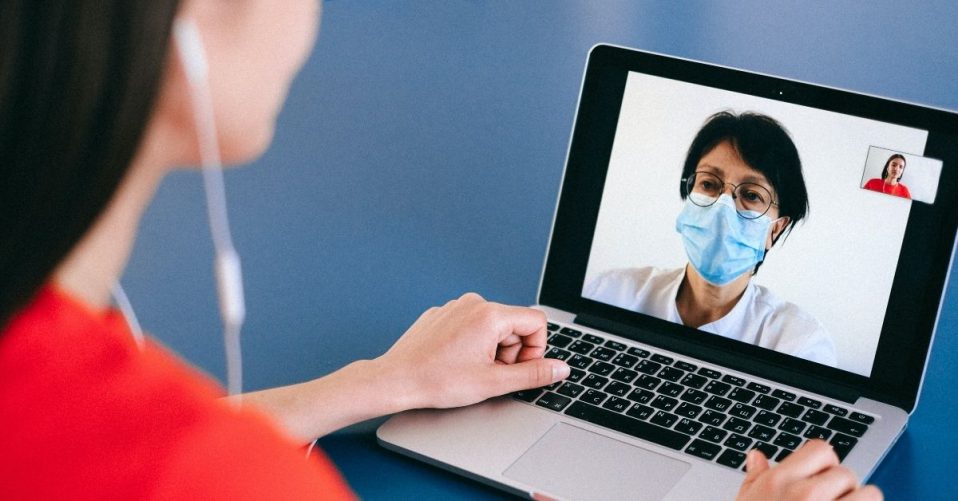By: Amy Cheng
Telehealth has made it easier for patients to book medical follow-up appointments, which is particularly important for people with chronic diseases.
Last year, almost one third of visits to general practitioners were via telehealth, according to research from Macquarie University.
Telehealth has been around for a while but it came into wider use in March last year, in response to the COVID-19 pandemic.
At its most basic, telehealth is defined as care at a distance and can be delivered via phone or video calls, with phone being the most common.
Government support
The Federal Government introduced support for the service last year when it announced its $1.1 billion package to boost health services in response to the pandemic.
As part of this package, $669 million was set aside to expand Medicare-subsidised telehealth services for all Australians.
This meant that patients were able to bill Medicare for telehealth services. For doctors, the GP bulk billing incentive, payment received for each service that is bulk billed, was doubled.
Support for the service was due to finish at the end of this month, however, Prime Minister Scott Morrison has announced that it will now continue until 30 June 2021.
“So far more than 51 million telehealth services have been delivered to 13 million patients and almost $2.6 billion in benefits paid. More than 82,000 providers have used telehealth services nationwide,” he said in a statement.
A game changer
“At some points, telehealth actually exceeded face-to-face [consults].” – Professor Andrew Georgiou, Macquarie University.
The report from Macquarie University, which analysed GP visits at 800 practices across Australia, found that phone consults jumped from zero during 2019 to more than 138,000 per week between January and September 2020.
Professor Andrew Georgiou and his co-authors believe that telehealth has been a “game changer” in general practice.
“At some points, telehealth actually exceeded face-to-face [consults],” Professor Georgiou said in a radio interview.
He believes a major concern for general practice is continuity of care, the repeated contact between a patient and a doctor.
“The barrier was often the patient not coming back and seeing the GP in the time [required],” he said.
“It’s important, particularly for patients with chronic diseases that they regularly see their GPs, that they follow up on the requirements for monitoring their care and it’s done in a regular fashion.”
Data from the Australian Bureau of Statistics from its Household Impacts of COVID-19 Survey, for the November 2020 period, found that 27 per cent of those surveyed had a long-term health condition and were more likely to use the service.
Success story of pandemic
“What telehealth has done is that it’s brought Medicare into the 21st century.” – Dr Michael Wright, chair of RACGP Expert Committee
Dr Michael Wright, chair of The Royal Australian College of General Practitioners Expert Committee, believes that telehealth is one of the “great success stories of the pandemic”.
“What telehealth has done is that it’s brought Medicare into the 21st century,” he said.
“[It] improves continuity of care, and we know that continuity of care is associated with better care for patients.”
It enabled him to accept consults from patients calling in as he was closing his surgery. Rather than booking them for the next day, he gave them phone appointments.
“That means my patients are getting quicker care and more comprehensive care and advice from me, who is their usual GP rather than… needing to see someone else,” he said.
“Patients are getting better continuity of care; they’re not needing to go to after-hours services as often and they’re not needing to go to emergency departments as often.”
Data from the Australian Institute of Health and Welfare found that the number of emergency department presentations in 2019–20 decreased by 1.4 per cent compared to 2018–19. However, some of this was likely to have been influenced by COVID-19 restrictions.
Limitations of telehealth
Dr Andrew Baird, a GP in Melbourne, is a strong advocate for video consultations. He believes that phone consultations are only for low acuity and well-defined problems.
“You’ve got the visual interaction and your rapport is improved. You connect with someone visually,” he said in a radio interview.
“You’ve got facial expressions, you’ve got gestures, you’ve got movements, so you’re potentially going to feel more connected socially with someone and that’s important for rapport.”
However, there are limitations to what can be examined remotely, according to Dr Baird. For example, eyes and ears cannot be examined properly, nor can a full nervous system examination be performed.
Despite its benefits, not many GPs and patients are embracing video consults.
“The ease of the phone gets in the way of video consultations. The problem with the phone is that it’s limited,” Dr Baird said.
“So, you end up with two consultations for the cost of one. The patient then has to make an appointment to come in for a consultation rather than [booking a consult] via video.”
The long-term benefits of telehealth are uncertain but Dr Baird believes it could have positive flow-on effects in society.
“If you’re preventing disease, you’re going to be improving population health as well,” he said.
The government will continue reviewing the ongoing role of telehealth in supporting the pandemic in the short term and is working out a plan with peak doctor groups for permanent post-pandemic telehealth arrangements.
Article supplied with thanks to Hope Media.
Feature image: Photo by Anna Shvets from Pexels




